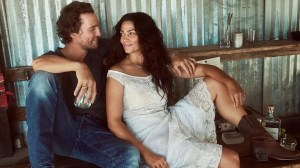Brothel houses in Amsterdam turn hubs for fashion designers
Instead of selling sex, Amsterdam is trying to sell sexy.The city unveiled its “Red Light Fashion” project...

Instead of selling sex, Amsterdam is trying to sell sexy.
The city unveiled its “Red Light Fashion” project yesterday, having converted 16 buildings that used to house prostitutes in the city’s ancient red light district into studios for young fashion designers.
The idea was born out of the government’s desire to crack down on crime in the area and it is not certain it will succeed: many neighbours are displeased with the high-class newcomers in an area that thrives on its seedy reputation, and even the designers say they are taking a risk. “I’m very curious whether my clients will come here,” said Jan Taminiau, one of 10 up-and-coming designers awarded space on the Oudezijds Voorburgwal, a central street in the red light district.“I’m sure that some people will be hesitant … but I think most of the clients that I have — I only make made-to-measure — they’ll think it’s fun to come here.”
Amsterdam politicians are convinced that radical change is needed in the red light district, and are spending lavishly to bring it about.
The area has been a centre of prostitution since Amsterdam’s golden age in the 1600s. After World War II, it became a major tourist attraction, along with coffee shops where marijuana is sold openly.
Although prostitution was formally legalised in 2001, the industry remains rife with corruption, from businessmen who own the buildings using them to launder money, to criminal gangs and pimps exploiting the women working there, to petty crime caused by dealers and junkies that frequent the area.



- 01
- 02
- 03
- 04
- 05




























